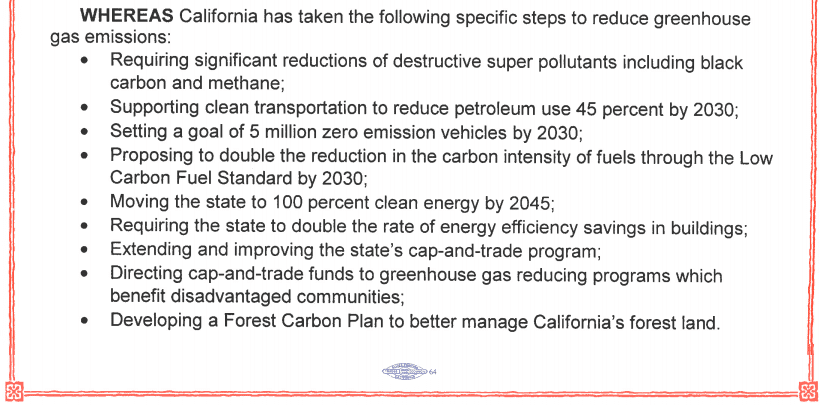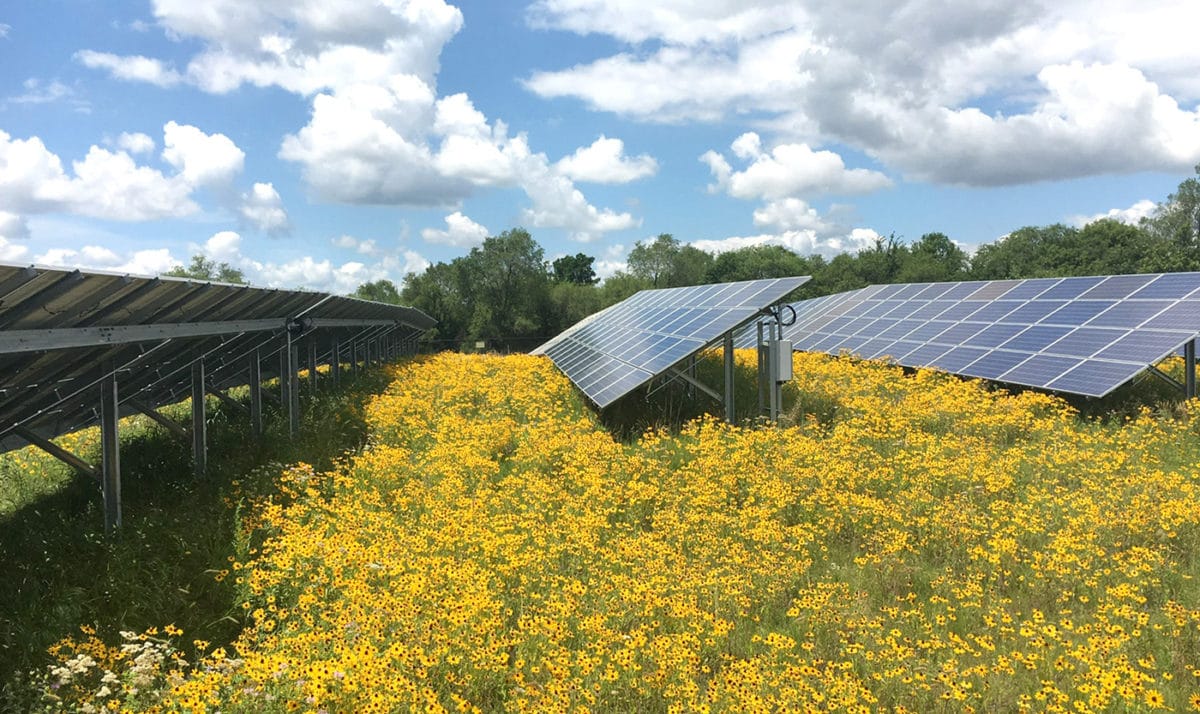While the headline news yesterday was on California Governor Edmund Brown (D) signing SB100, which sets the electricity sector on a path to be CO2 free by 2045, the real news may have been another document that was issued yesterday.
During the ceremony for SB 100, Governor Brown put his signature on Executive Order B-55-18 to Achieve Carbon Neutrality (PDF). The document’s stated goal is directing the state to achieve carbon neutrality by 2045 and net negative greenhouse gas emissions after that.
The key paragraph from the Governor’s signing message (PDF) that makes this executive order arguably much bigger than SB100:
Let’s not forget, our electricity sector is responsible for only 16 percent of California’s current carbon emissions. To truly stop global warming, cleaning up our electricity grid is not enough…It will require large investments across all sectors — energy, transportation, industrial, commercial and residential buildings, agriculture and various forms of sequestration, including natural and working lands.
The first page of the document states why this action should be taken – climate change and its associated complexities. Along with that are the steps that California has already taken, below image, on this path. The logic painted seems to suggest this final movement is but a step, versus a leap.

The second page of the document starts with the purpose of it all:
- A new statewide goal is established to achieve carbon neutrality as soon as possible, and no later than 2045, and achieve and maintain net negative emissions thereafter. This goal is in addition to the existing statewide targets of reducing greenhouse gas emissions.
The rest of the document gives guidance to various departments in how to shape their focus.
Brown is showing an explicit example of leadership in the seat of governance designed for forward thinking actions. This starts with seeing a goal that is hard, and which contains some problems that aren’t yet solved. In problems like these there will be a political capital cost, and Brown clearly knows the work will require extensive efforts by many groups.
The executive order doesn’t state how to get there, only states why we must, and then sets the various expert groups within the state to apply that expertise to the structural challenges.
Executive orders do not always carry the legal force that legislation does. Governor Brown knows this well, given that the state’s legislature had to pass a 50% by 2030 renewable energy mandate in 2015 even though former Governor Schwarzenegger (R) had put out an executive order to this effect years prior. However, this effort is now a legally binding requirement.
Recently, pv magazine commented on what we thought it might take to move the electricity grid to 100% clean energy. That number is definitely going to shift upward if we move to 100% electric vehicles and electricity heating and other sectors. How we solve agricultural or aviation emissions, is something we’re definitely going to learn about. Another question is what sequestration solutions will we choose, which could use forests, soils and other natural landscapes, as noted in the order.
Good luck California. Thank you.
This content is protected by copyright and may not be reused. If you want to cooperate with us and would like to reuse some of our content, please contact: editors@pv-magazine.com.








By submitting this form you agree to pv magazine using your data for the purposes of publishing your comment.
Your personal data will only be disclosed or otherwise transmitted to third parties for the purposes of spam filtering or if this is necessary for technical maintenance of the website. Any other transfer to third parties will not take place unless this is justified on the basis of applicable data protection regulations or if pv magazine is legally obliged to do so.
You may revoke this consent at any time with effect for the future, in which case your personal data will be deleted immediately. Otherwise, your data will be deleted if pv magazine has processed your request or the purpose of data storage is fulfilled.
Further information on data privacy can be found in our Data Protection Policy.